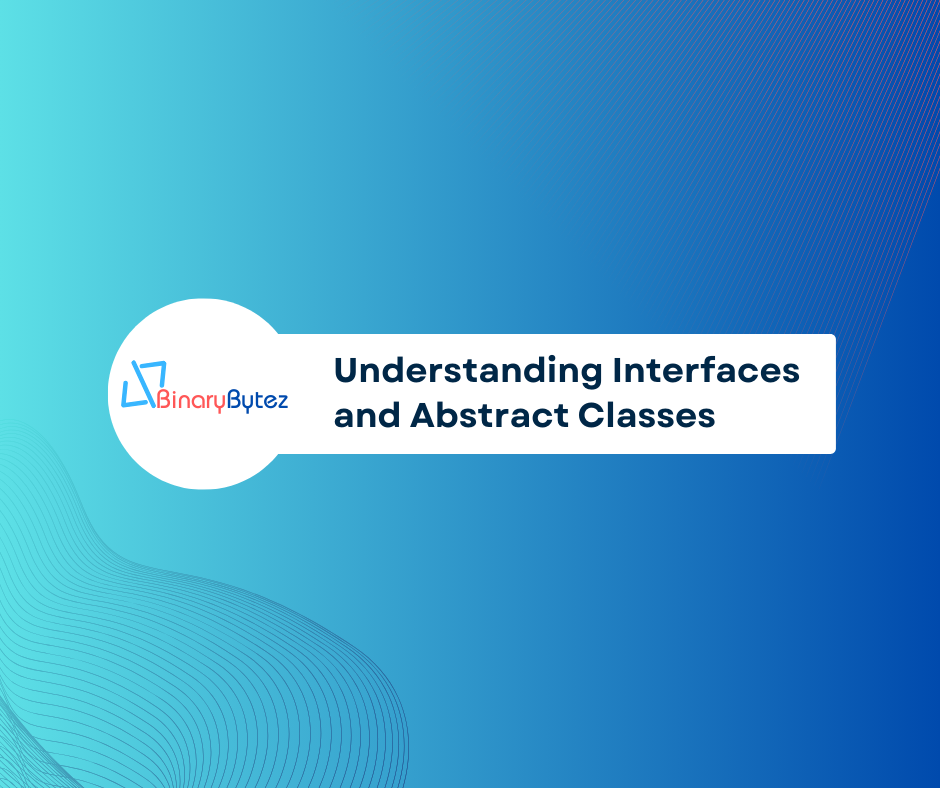In this blog post, we’ll explore these foundational concepts, discussing their definitions, differences, benefits, and providing clear examples in C#.
In the world of programming, understanding interfaces and abstract classes in C# is essential for creating flexible and maintainable code. In this blog post, we’ll explore these foundational concepts, discussing their definitions, differences, benefits, and providing clear examples in C#. Let’s dive into the basics of interfaces and abstract classes in C# programming!
Interfaces:
Definition:
Interfaces in C# serve as contracts that define a set of methods or properties that implementing classes must adhere to. They declare the “what” of a class without specifying the “how,” promoting loose coupling and allowing for polymorphism. Interfaces are declared using the interface keyword and can be implemented by multiple classes.
Syntax:
Interfaces are declared using the interface keyword.
interface IAnimal {
void MakeSound();
}
Example:
Let’s consider a scenario where we have different animals in a zoo. We want each animal class to implement a method to make a sound. We can define an interface IAnimal:
interface IAnimal {
void MakeSound();
}
Each animal class can then implement this interface and provide its own implementation of the MakeSound method:
class Dog : IAnimal {
public void MakeSound() {
Console.WriteLine("Woof");
}
}
class Cat : IAnimal {
public void MakeSound() {
Console.WriteLine("Meow");
}
}
Benefits:
Abstract Classes:
Definition:
Abstract classes in C# are classes that cannot be instantiated on their own and may contain abstract methods (methods without implementation) as well as concrete methods (methods with implementation). They provide a blueprint for derived classes to follow, enabling code reuse and providing a common base for related classes.
Syntax:
Abstract classes are declared using the abstract keyword.
abstract class Shape {
public abstract double GetArea();
}
Example:
Let’s consider a drawing application where we have different shapes, each with its own area calculation logic. We can define an abstract class Shape:
abstract class Shape {
public abstract double GetArea();
}
Each shape class can inherit from this abstract class and provide its own implementation of the GetArea method:
class Rectangle : Shape {
public double Length { get; set; }
public double Width { get; set; }
public override double GetArea() {
return Length * Width;
}
}
class Circle : Shape {
public double Radius { get; set; }
public override double GetArea() {
return Math.PI * Radius * Radius;
}
}
Benefits:
Differences and Considerations:
Here’s a tabular format highlighting the differences between interfaces and abstract classes in C#:
| Feature | Interfaces | Abstract Classes |
|---|---|---|
| Instantiation | Cannot be instantiated directly | Cannot be instantiated directly |
| Inheritance | Supports multiple inheritance | Does not support multiple inheritance |
| Members | Can only contain method signatures (no fields or implementation) | Can contain both abstract and concrete members (including fields and methods with implementation) |
| Implementation | All members are abstract (no implementation) | Can have both abstract and concrete members |
| Purpose | Defines a contract for classes to implement | Provides a blueprint for derived classes |
| Example Syntax | csharp interface IExample { void Method(); } |
csharp abstract class Example { public abstract void Method(); } |
This tabular format clearly outlines the key differences between interfaces and abstract classes in C#, making it easier to understand their distinctions.
In conclusion, interfaces and abstract classes are powerful tools in C# for designing flexible and maintainable code. Understanding their differences and benefits is crucial for effective software design and development.
Please find original article here.
Notice Inappropriate?
If you come across any inappropriate content, please report it to our administrators!





